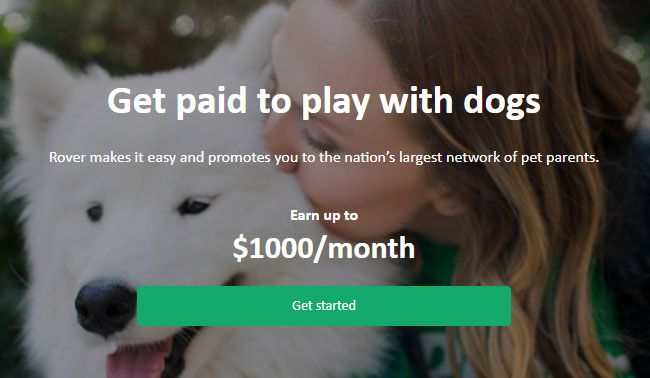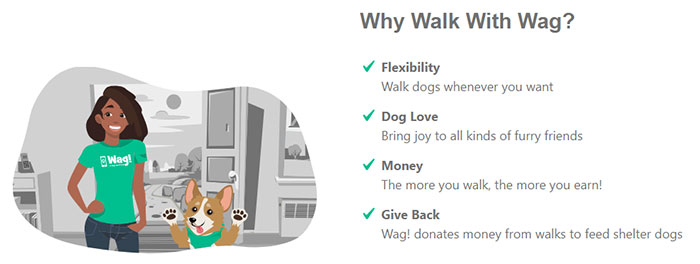Voice actors have been around for a long time, but audiobook narrator jobs have become a surprisingly big part of that industry in recent years.
If I had to venture a guess, I’d say it’s thanks to people’s long commute times and the boredom that comes along with that. Whatever the reason, being a narrator is great for anyone who’s been looking for ways to read and make money at the same time.
If eloquence and precise articulation get you excited, then maybe becoming an audiobook narrator is your calling.
It definitely sounds like an incredibly fun career track to pursue.
Before I start telling you all about this profession and how you can land your first gig, there’s something important you need to know first:
In voice acting, your voice is what’s going to get you hired.
It sounds obvious, I know, but think about that for a moment.
You need to have a pleasant voice.
Unfortunately, no amount of training or preparation can give you that. Like with other forms of acting, you either have it or you don’t.
That doesn’t mean audiobook narrating doesn’t require training or preparation, because it certainly does. But those things need to be fueled by natural talent.
If you think you’ve got what it takes to be a narrator, read on to find out what skills and equipment you need, the different types of audiobook narration, and where to look for audiobook narrator jobs
What skills do you need to apply for audiobook narrator jobs?
I’ve marveled at the unbelievable talent some people have for manipulating their own voices.
There’s something wonderfully entertaining about hearing someone tell a vivid story, or seeing a fictional character come to life thanks to the voice behind it.
People don’t always realize the amount of skill and talent that goes into audiobook recordings.
You have to consider the right pacing and tone but keep it entertaining, speak clearly, bring life to the story and the characters, and stay true to the original intent of the text.
All of these are necessary skills that you need to work on.
On top of that, very successful book narrators can modulate their voices to portray different characters (in what is known as solo narration), including ones of different genders and with different accents.
This isn’t a required skill, but it can open up a lot of doors for you.
Narration is a technical art form and requires dedication and stamina.
You have to coordinate with the publisher and other voice actors (if there are any), you have to deliver hours upon hours of reading work, and you have to be your own director.
Reading a book out loud is like directing a story that you’re telling; during every moment of the read-through, a narrator has to stay focused on the rhythm, characters, intonation, and enunciation.
Any mistake means doing it all over again.
Possibly one of the most important skills an audiobook narrator should have, however, is good organizational skills.
Books often have a lot of characters to keep track of and it’s important for continuity that the voices of each and the pronunciations of words stay the same throughout the book or sometimes a series of books.
What Equipment Do You Need to Do Audiobook Narrator Job?
1. Professional quality microphone
If you want to get and keep clients, don’t skimp on your microphone.
No matter how great your voice quality is, your recording can be ruined by a cheap mic that records poor quality audio or too much background noise.
It’s also recommended that the microphone you get connects to your computer via XLR, as opposed to USB or wireless microphones.
Also, a microphone stand is recommended, as you won’t want to hold the microphone for hours on end.
You’ll also want to invest in a pop filter, which is a mesh screen that you position between the mic and your mouth. It’s meant to reduce popping sounds from fast-moving air after saying sounds like p’s and b’s.
2. Professional quality headphones
Another piece of equipment that you can’t skimp on is your headphones.
To get and keep audiobook narrator jobs, you’ll need to hear your recording accurately to assess the quality of your voice and background noise while you’re editing.
3. Audio recording and editing software
You’ll need a stable program to record your audio as cleanly as possible without background noise and as little compression as possible.
It’s better if the program can also do editing, as in removing and stitching together splices, reducing background noise, and enhancing parts of the audio as needed.
4. Quality computer or laptop
Your computer needs to be able to handle all the equipment and software you need for narration.
Consider the ports available, sound card, processor, and memory.
5. Dedicated recording space
If you can’t afford a studio just yet, set up a space in a quiet corner in your house with minimal foot traffic, no outside sounds, and without ambient noises from fans, air conditioners, refrigerators, dishwashers, and other appliances and equipment that might be picked up by your microphone.
Egg crates work surprisingly well as a sound-absorbing material on your walls. You can also look for a desktop mic isolation shield that you can position around your microphone while you record.
5 Different Types of Audiobook Narration
There are three main types of audiobook narration:
1. Solo Narration
This involves just one person reading out all of the lines.
They could be acting out different voices for different characters, or use one tone of voice throughout.
It depends on the publisher’s needs and the type of book.
2. Duet Narration
This is where two people are reading different parts of the book.
It could involve one person as the narrator and another acting out the characters or both acting out different characters.
Sometimes, a book has two different points of view, of which each is then read separately by the two people.
3. Full-Cast Narration
A full cast is a whole production where a group of people is each assigned a different character role to read for.
Sometimes a person can still have more than one role.
As I mentioned earlier, there are also different methods of recording the audio:
4. Punch and Roll
This method of recording involves rolling back the audio a bit to before a mistake was made and then “punching” in a new recording that continues where that part left off.
C.C. Hogan does a great job of explaining this method if you’re interested.
5. Straight Record
The recording keeps rolling until you decide to stop.
This includes mistakes and rereadings to correct those mistakes. You then have to go back later and edit out the parts where mistakes were made.
How Does Audiobook Narration Typically Go?
The exact process varies depending on your employer or whether you work freelance, but in general, here’s how it goes.
You’ll be sent the text to read, often in advance, so that you can prepare.
Familiarize yourself with the book, the characters, any unfamiliar words, accents required, and other elements that can contribute to your narration.
Once you’re ready, start recording your narration with the appropriate cadence, lilt, voices, pronunciations, accents, and everything else required.
When you’re done recording, you can start reviewing and editing your recording to make sure that it’s clean and high-quality.
After editing and processing, you’re ready to deliver to your client and get paid.
How Much Do Audiobook Recording Jobs Pay?
According to established audiobook narrators like Krystal Wascher, someone who’s just starting out in this line of work (even those with no experience) can expect around $80 per recorded hour.
Experienced narrators can get paid up to $250 per finished hour, and sometimes even $500 for the best and most experienced narrators.
There are too many variables and branches of voice acting to get a solid number.
That said, audiobooks can be a great source of both active and passive income, depending on the deal.
Sometimes, a gig pays a flat rate (usually per hour), and other times the narrator will get a percentage of the royalties paid to the writer over a number of months or years.
A ‘finished hour’ does not refer to the number of hours you put in, but the length of the finished audio track.
Some narrators say it takes them about two hours of recording per one finished hour, depending on the number of mistakes, stops, and retakes involved.
Where to Find Audiobook Narrator Jobs
There are dedicated job boards for audiobook narrators, as well as voice actors and talents.
ACX is probably the most specialized and the most popular site to find audiobook narrator jobs.
It works as a marketplace where authors, agents, and publishers can connect with audiobook narrators, sound engineers, recording studios, and other producers of finished audiobooks.
Through ACX, you can find an unlimited number of potential gigs, and the audiobooks you produce will be available on Audible, Amazon, and iTunes.
Being on ACX is also great for beginners. There are plenty of knowledge resources on their site. Also, it allows you to build your confidence and skills by auditioning to different jobs, plus you can use your recordings as samples to land clients outside of ACX.
Voices.com is a more general marketplace for voice actors, but you can specifically list your services under “Narrators.”
Other job boards for voice actors include Voice123 and Bunny Studio Voice.
Getting a job directly with an author or a publishing company allows you more flexibility in terms of your pay rate as well as a greater chance that you’re hired for future projects if you do a great job at first.
Your first stop should be FlexJobs. This job board vets companies that list jobs with them so you can rest assured you’re not going to get scammed.
The classic freelancer sites like Fiverr, Upwork, People Per Hour, and Freelancer are also great places to look for narrator gigs.
Tips to Be a Successful Audiobook Narrator
Read the book in advance. You’d think this shouldn’t even be said, but you’d be surprised at how many rookies waste time with imperfect recordings because they think they can wing it but get sidelined by unexpected words or accents from characters.
Develop a system to keep track of the characters and their voices. Some narrators color-code text spoken by different characters. Others list down pages and the lines themselves.
The physical descriptions of characters are also important when planning out voices for them. For instance, an active child may speak a little differently from a sick, frail child.
Learn to control your movements while narrating. Any movement you do creates extraneous noise: your clothes rustling, your desk or chair creaking, your foot tapping. If you’re working with a physical book, the sound of the pages turning can also make noise.
Watch your habits. Audiobook narration can strain your voice, so you’d be wise to change habits that will strain your voice even more.
This is a good time to stop smoking and drinking alcohol, especially before a recording session. It’s also a good idea to avoid eating food and drinking beverages that increase mucus output, such as dairy, eggs, soy products, soda, or coffee.
Another tip from the pros is to always have lip balm handy during a recording session. Otherwise, your lips could be cracked and bleeding at the end of a sessiomn.
The Bottom Line
Audiobook narration is only one branch of an over-arching voice actor industry.
There are plenty of other ways to earn a part-time or full-time gig with your voice, though you have to be dedicated and know where to get started.
This isn’t always an easy industry to get into, but it can be a very rewarding one with plenty of career satisfaction, especially if you love reading and like getting paid to read.
Does audiobook narration interest you? Where do you plan to look for jobs? Share your plans with us in the comments!




















